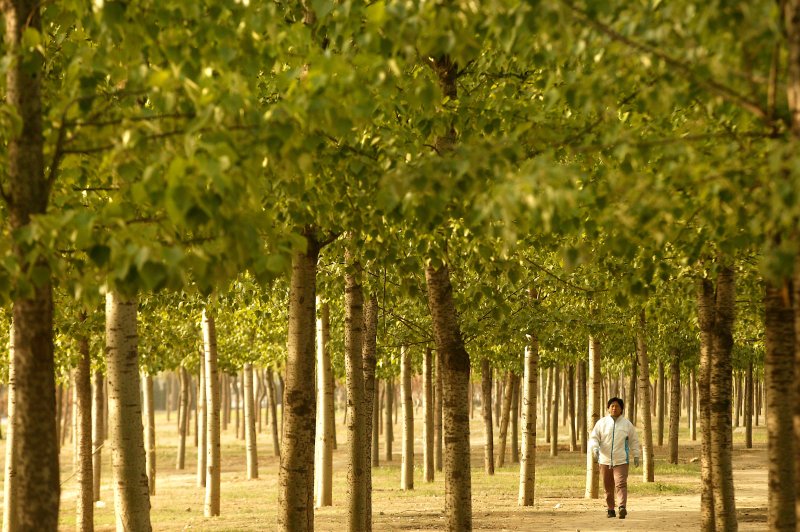China has funded the planting of massive monoculture forests. Photo by Stephen Shaver/UPI |
License Photo
Oct. 5 (UPI) -- Not all tree stands are created equal. Forests rich in species diversity store twice as much carbon as monoculture forests, according to new analysis by climate scientists in Germany, Switzerland and China.
To better understand the carbon cycle, researchers planted a variety of tree stands in China in 2009. The experimental forests included stands of a single tree species, as well as more diverse plots. The most diverse stands featured 16 species spread across an area of 7,000 square feet.
After almost a decade of maturation, scientists measured the carbon absorption and storage abilities of the different tree stands. The miniature forest with the most diverse mix of trees stored twice as much carbon as the least diverse, the stand with only a single species.
When forests take-up more carbon, it is a sign of greater productivity and health. A diversity of tree species provide food and shelter for a wider variety of animals.
"In the forest biodiversity experiment, biomass increased just as quickly with species richness as it did in the meadow ecosystems," Helge Bruelheide, of the Martin Luther University Halle-Wittenberg, said in a news release. "As a result, even after just four years, there were clear differences between the monocultures and the species-rich forests."
Scientists hope their findings -- published this week in the journal Science -- will inform future reforestation projects.
In China, the government has funded several massive forest restoration projects, but most feature massive monoculture stands.
"Our new study shows that forests are not all the same when it comes to climate protection: monocultures achieve not even half of the desired ecosystem service," said researcher Bernhard Schmid. "The full level of carbon sequestration and thus mitigation of global warming can only be achieved with a mix of species. In addition, species-rich forests also contribute toward protecting the world's threatened biodiversity."
Monoculture reforesting efforts looked to mimic commercial agriculture. Authors of the latest study argue they should mimic healthy forests.
"Unfortunately, there's still a widespread misconception that productivity and biodiversity are mutually exclusive, but the opposite is true," Schmid said.















